Futures of Education Literature
In the course of supporting the International Commission on the Futures of Education (September 2019 - October 2020) the UNESCO Secretariat reviewed over 200 reports to understand what is being said about the future of education. Here’s what we found…
Common questions running through the literature
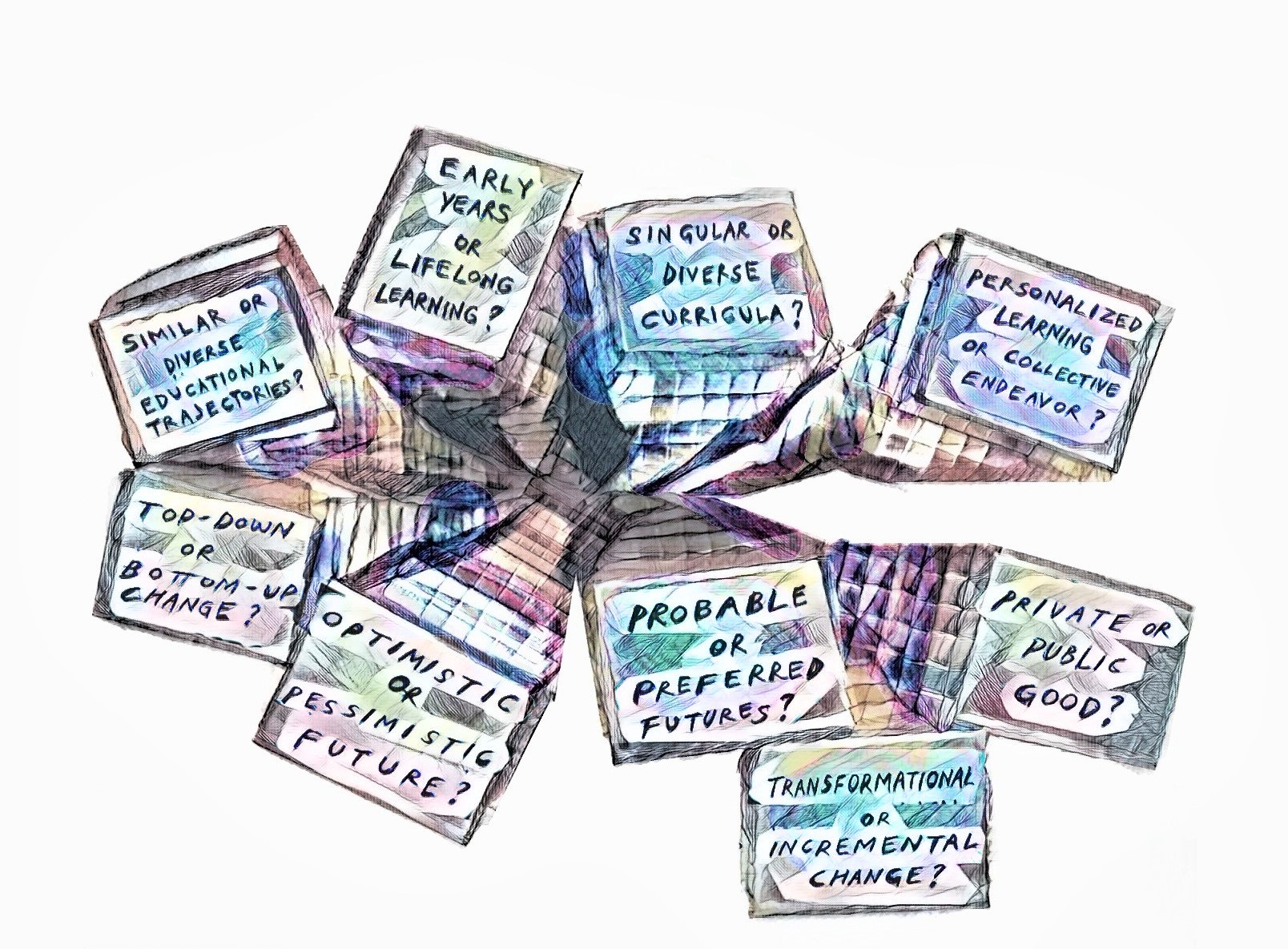
Nine gradients identified
Public or private good
Who pays for education in the future?

The literature tended to portray the future of education as a private good aimed at individuals more than at groups and communities. It anticipated that students and their families will shoulder greater responsibility for finding learning tailored to their specific needs and preferences. In this vision, learners are expected to exercise greater autonomy over the financing of their education and select among various options in a competitive market of educational offerings. Authors also widely agreed that education should become increasingly focused on individuals as it progresses and, similarly, accommodate more choices and flexibility for learners as they age.
To learn more, click here.
Singular or diverse curricula
Which perspectives will be included in the curricula of the future?
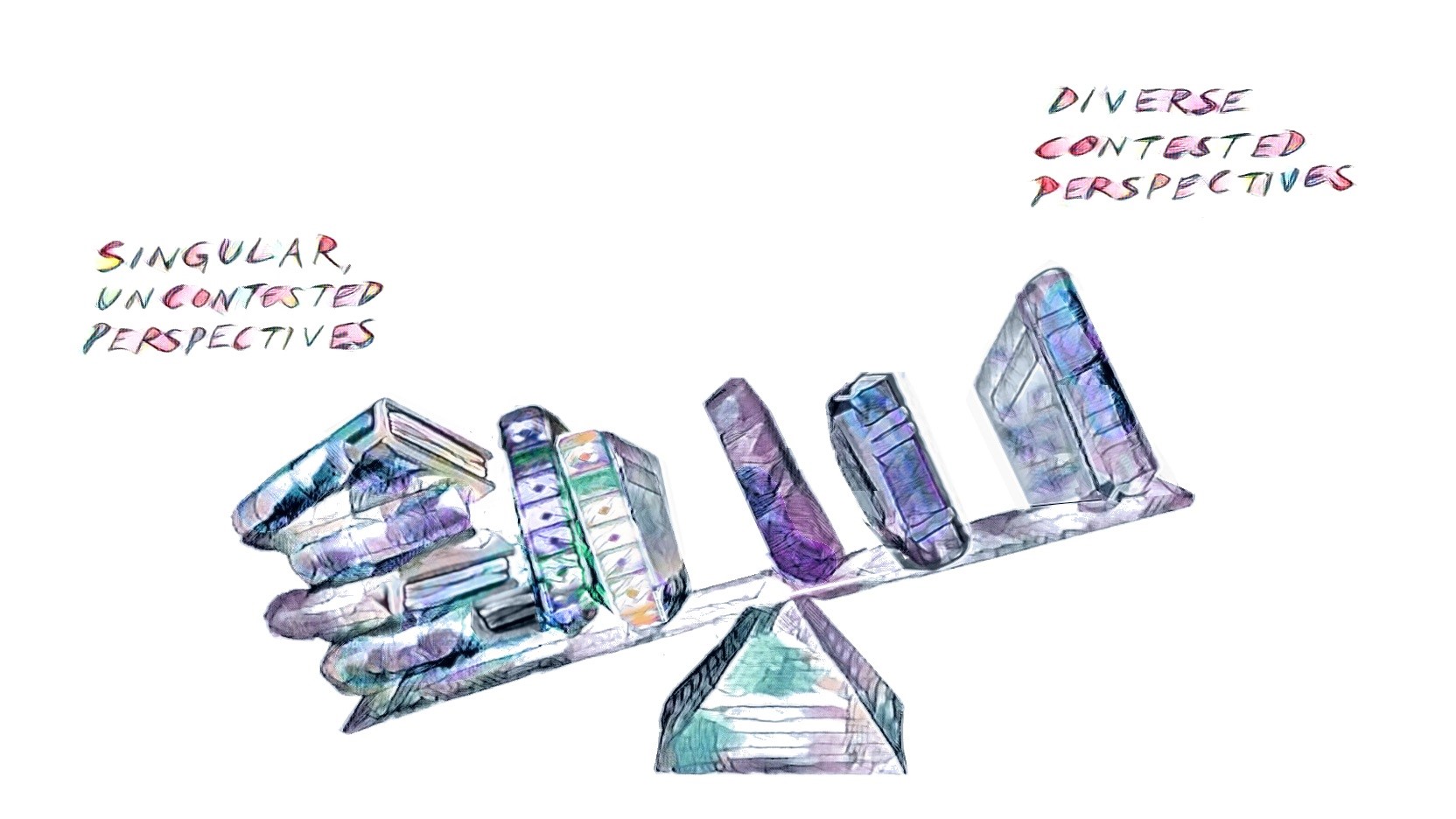
Although some authors called attention to the contested nature of knowledge and felt that information should be presented to learners as holding tenuous authority, a majority felt that consensus and dominant views should be presented as objective truth: information to be assimilated rather than interrogated. Recognition of biased perspectives in knowledge production and dissemination, even as it concerns new technology and digital platforms, was relatively unusual. The literature emphasized the importance of imparting mainstream skills and competencies as efficiently as possible, glossing over questions about diverse outlooks and alternative knowledge systems.
To learn more, click here.
Early learning or lifelong learning
When in life is learning most important?
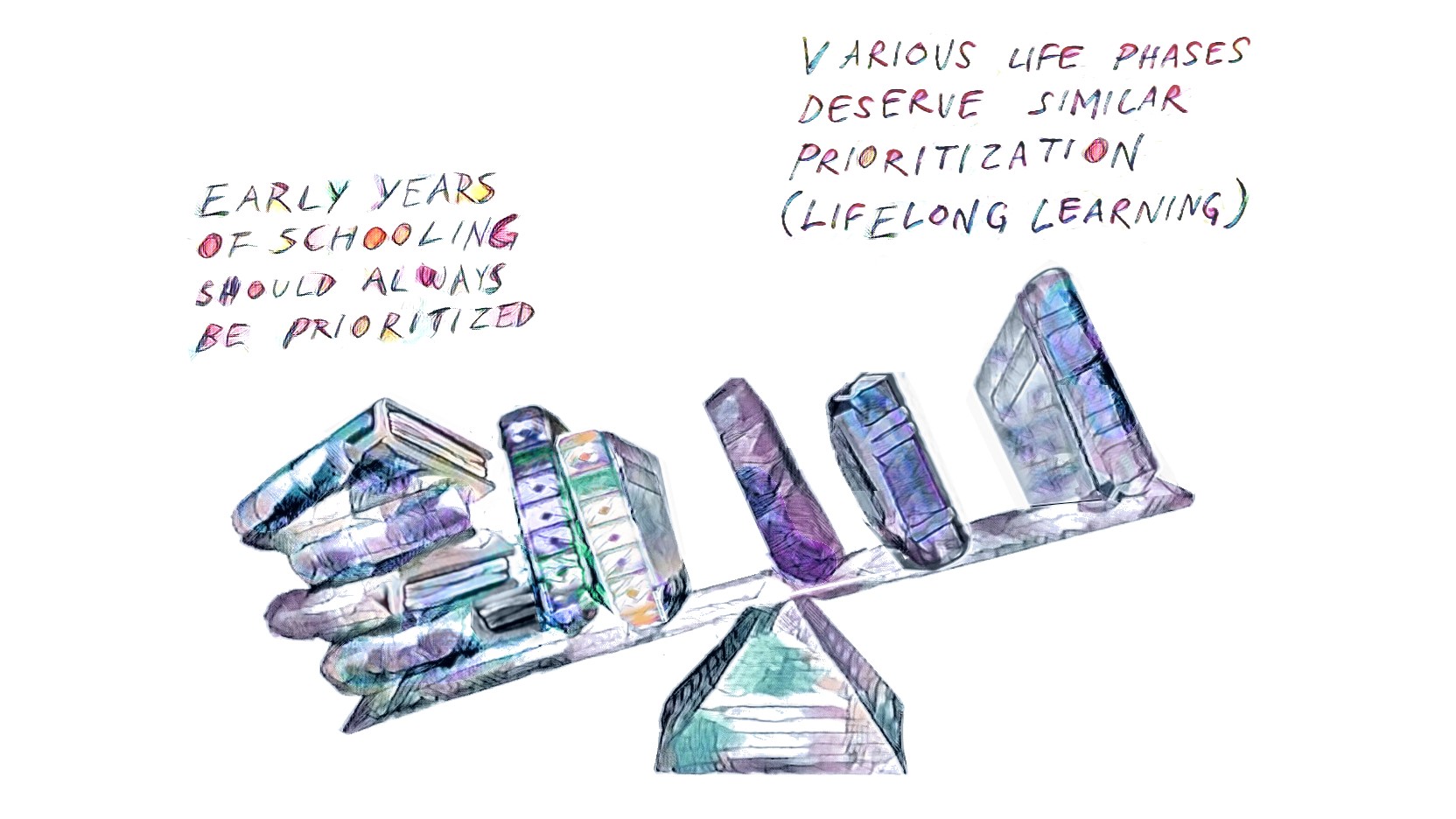
The theme of lifelong learning received considerable attention in the literature, but authors tended to agree that the early years of learning hold special and unique importance. They argued that formal and compulsory education is needed for young children to assure the acquisition of basic skills that provide foundations for further learning and knowledge acquisition. Overall, the literature indicated that formal education becomes less essential as individuals age, and almost no authors suggested that formal education should be compulsory for adults. Education for adults was typically framed around reskilling to realize economic opportunities in labor markets being transformed by technology and other market forces.
To learn more, click here.
Personalized learning or collective endeavour
Should learning be tailored to the needs of individuals or groups?
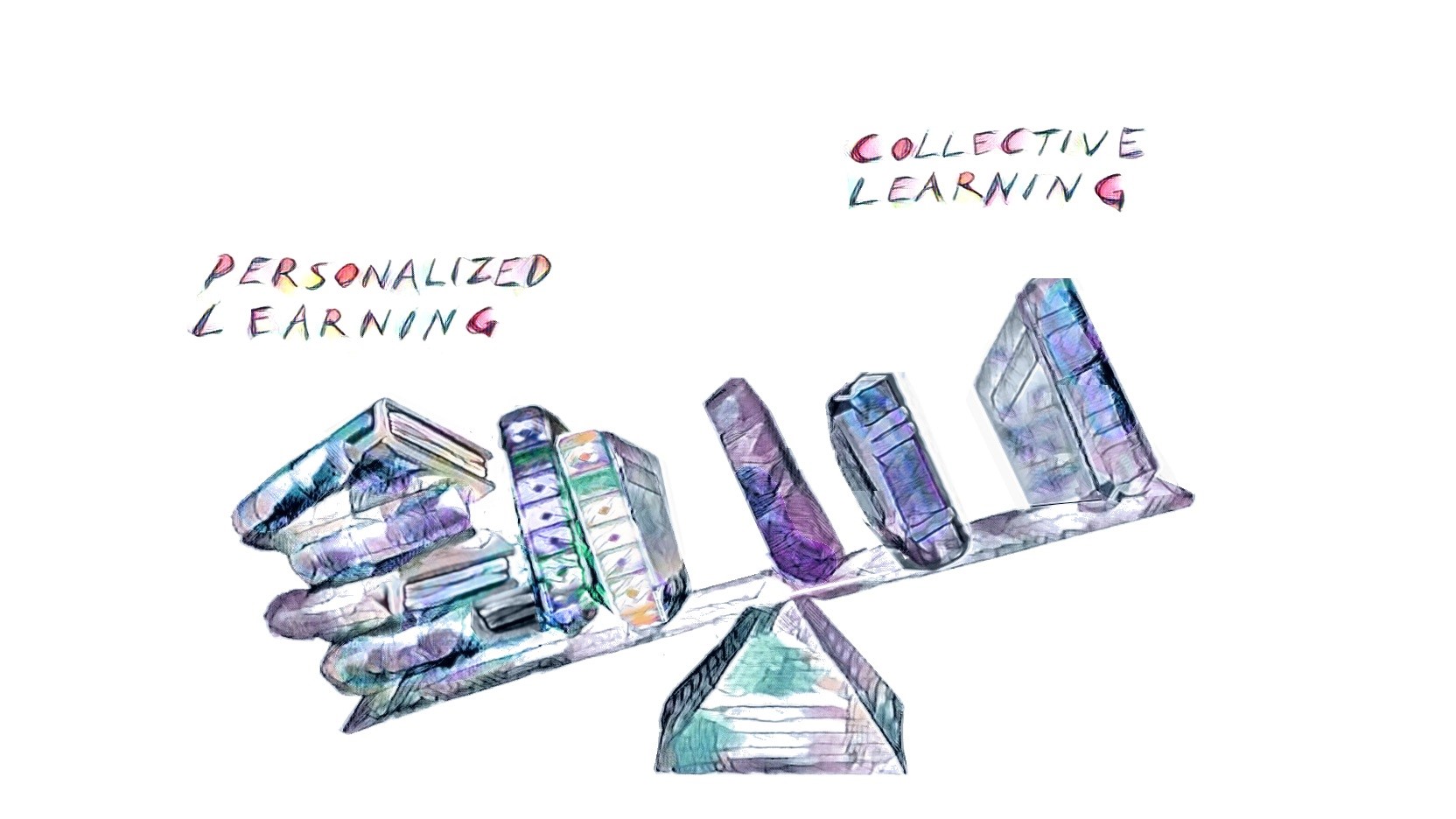
Numerous authors argued that in the future the content, sequence and pace of education will differ considerably person-to-person to better assure positive learning outcomes. The literature tended to assume that learning needs and preferences are innately varied such that more and less optimal ways of learning exist for every individual. Adaptive and intelligent technology was widely established as an enabler of personalized learning; it was presented as a tool that would finally break century-old factory models of education. But the literature generally assumed that variances in learning would be bound to established curriculum. This formed the guardrails of what could be personalized, although some authors suggested that a growing number of learners, armed with their own technology and repositories of information, may set out on their own, unconstrained by curriculum or even formal education. Very few authors however predicted futures where groups of learners would collectively forge new educational pathways with technology.
To learn more, click here.
Transformation or incremental change
Is transformational change needed for education?

Most of the literature stated that fundamental changes to education systems are required to meet current and future challenges. Few authors indicated that incremental and gradual change would suffice. The need for transformation was usually traced to one or two external factors: (1) social and economic disruptions caused by technology; and (2) the mounting challenges of climate change and other environmental shifts. Numerous authors observed that education is replicating, accelerating, and globalizing unsustainable practices, such that radical changes to education are not only advisable but necessary for the well-being of human beings and perhaps even their survival on a fragile planet. Literature published after the COVID-19 pandemic was more skeptical of transformative change. It reflected awareness that the sudden shift to distance education left many learners behind and that more incremental reforms are advisable to better confront future shocks and milder disruptions.
To learn more, click here.
Similar or diverse education trajectories
Will education become more or less similar across countries?

Running through the literature was an assumption that changes to education systems would be largely global and follow similar trajectories. In this sense the future was treated—whether explicitly or, more often, implicitly—as a singular destination. Relatively few authors anticipated more variance among learning systems in the future. Even writers advocating for transformational change tended to expect that these transformations would be broadly similar across diverse communities, countries, and regions. The view that emerged from the literature was greater educational homogeny, based, at least in part, on better and faster information sharing across countries about effective educational change and growing reliance on technology and software that have global reach and are largely uniform in kind as well as in application.
To learn more, click here.
Top-down or bottom-up change
Will changes in education be top-down or bottom-up?

The literature tended to view government leaders as the primary instigators of future changes in education. Recommendations in the literature typically targeted policymakers in formal political institutions, like parliaments and ministries of education. While some authors acknowledged that pressure to institute changes to educations would come from communities, especially parents of students, teachers, and learners themselves, these stakeholders were seldom seen as the architects of reform. Very few writers imagined futures where policymakers would be forced to act on prescriptions and appeals from people with less power. This was, however, framed by assumptions that policymakers will generally make evidence-based decisions and act in the best interests of the many people education touches. Work anticipating leaders that might use education as a mechanism of subjection was quite rare.
To learn more, click here.
Optimist or pessimistic future
Are writers optimistic or pessimistic about the future of education?
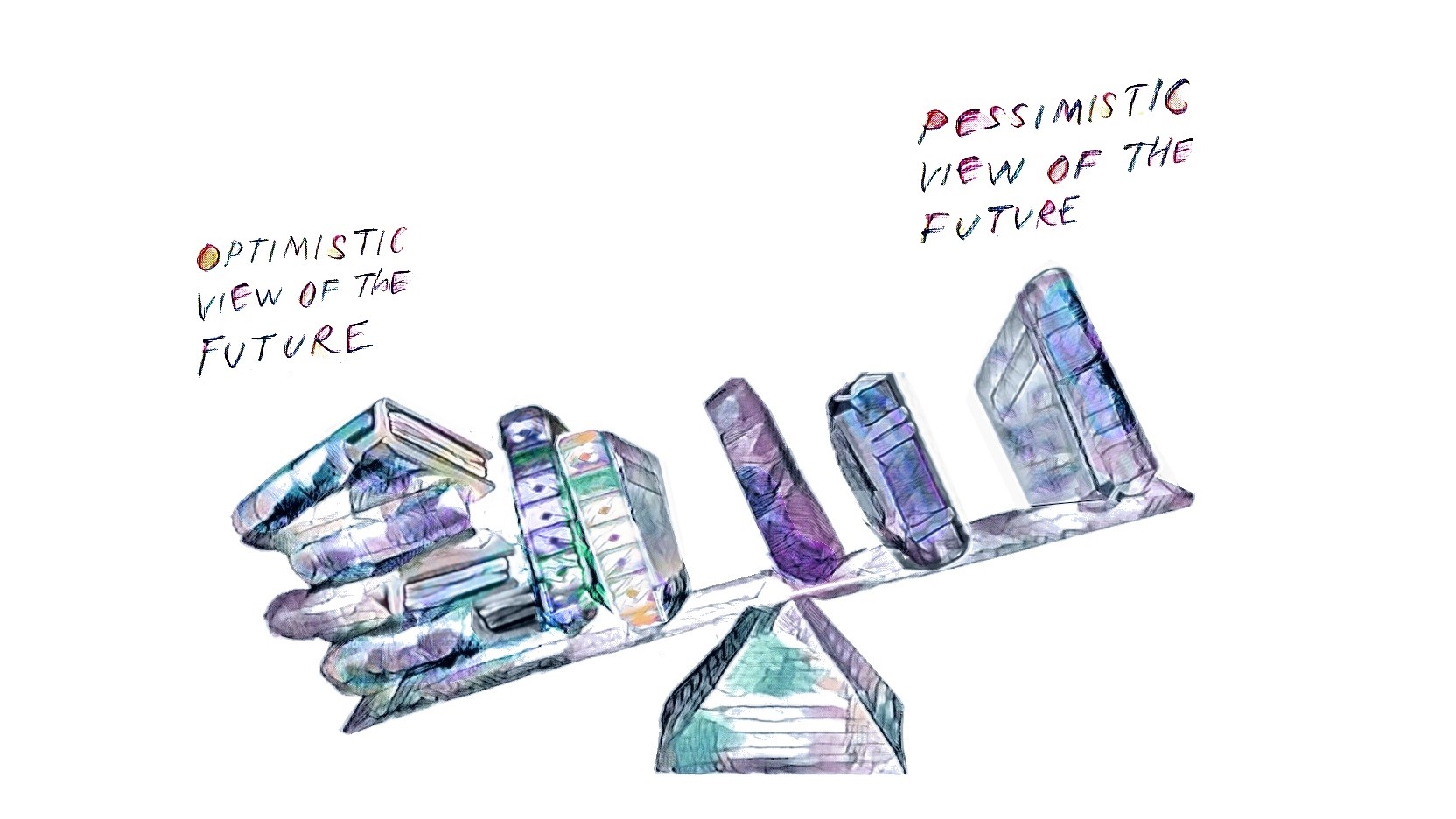
Most publications reflected optimism about the future of education. Writers tended to describe the future as a place where learning better advances and enables human rights and moves closer—either in fits and starts or through great leaps—towards the aspirations of inclusive, equitable, and quality education for all. While authors foresaw major challenges to education, even existential challenges in the form of environmental and nuclear threats, they described them as surmountable. The wide-angle view gained from the literature is that the future of education is bright and will benefit from human ingenuity and new technologies. Digitalization and technology were almost never presented as net dangers to education, but rather tools that could be appropriated and applied to support educational improvement and positive transformation.
To learn more, click here.
Probable or preferred futures
Are writers more concerned about the future we will get
or the future we want?

Most of the literature described expected futures for education rather than desired futures, even if ideas were floated to move education towards preferred outcomes. Authors tended to explain what they anticipate in the future and how this will influence education in both good and bad ways. In this sense, education was presented as having limited power to shape the future; instead, writers advanced ideas that education itself would be shaped by more powerful external forces, especially changes in labor markets. The literature was full of prognostications for “the future we will get”, as opposed to “the future we want”. Interestingly, this realist view appeared to shift somewhat in work published after the beginning of the COVID-19 pandemic. Reports written after February 2020 tended to articulate desired futures for education, a motivation borne of the tremendous learning inequalities revealed during the crisis and the fragility of education systems. The crisis seemed to help free the imaginations of authors, perhaps because the pandemic was so unanticipated it made other predictions more palatable.
To learn more, click here.
A Review of the Overall Literature
To surface work for review, UNESCO scanned for work in multiple languages that met three strict criteria:
- Included the words “future” and “education” or “knowledge” in the title or subtitle;
- Published no later than 2009, and preferably after 2015;
- Reflected a global or regional scope, rather than a local or national scope.
Language of the Literature Reviewed

Type of Documents Reviewed

Click here to see the Master Repository of all documents reviewed by UNESCO.